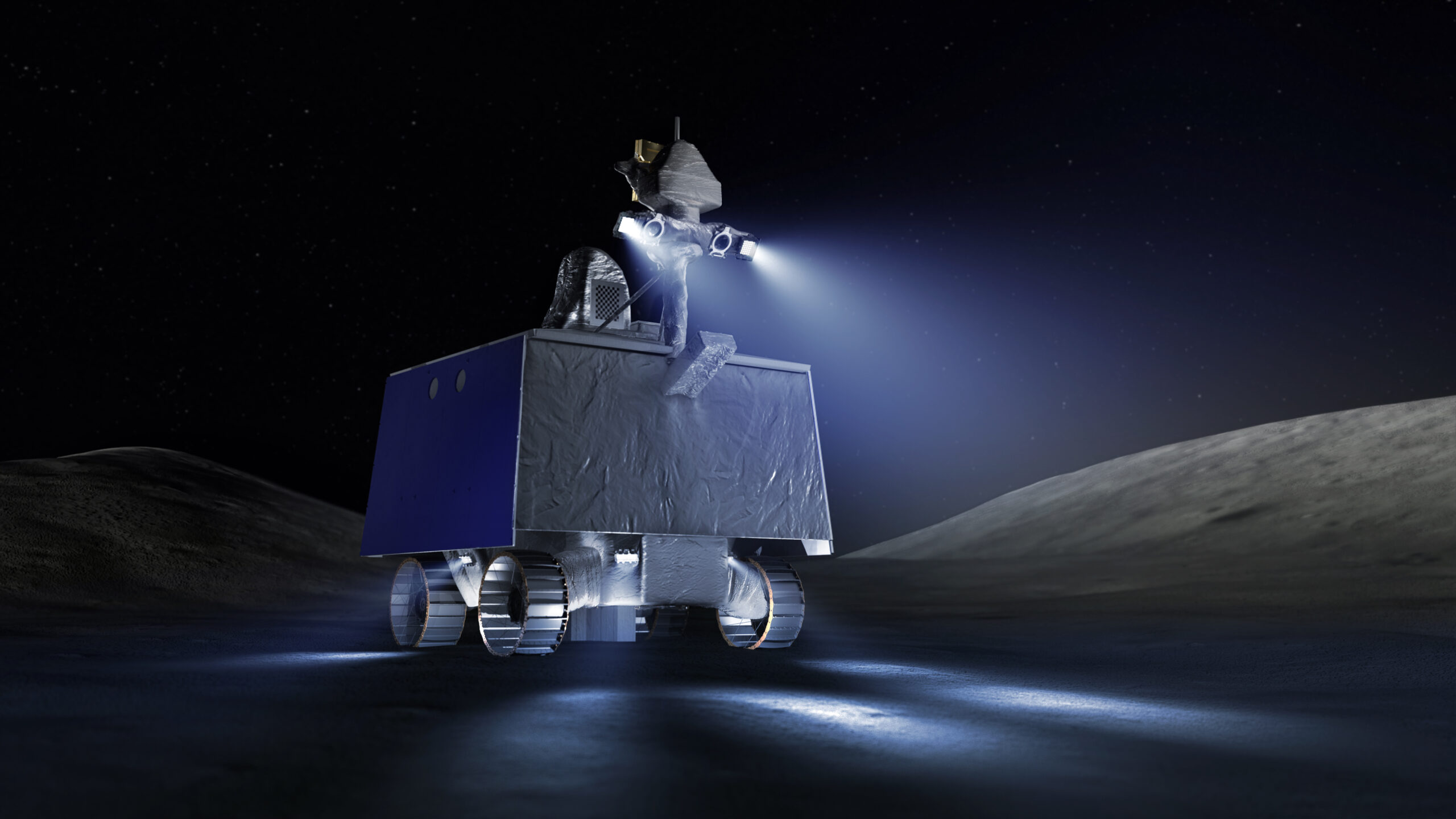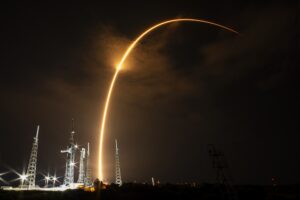BUSAN, South Korea — NASA has canceled a robotic lunar rover mission that would have searched for ice at the moon’s south pole, citing development delays and cost overruns.
NASA announced on July 17 that it will end development of the Volatiles Investigating Polar Exploration Rove (VIPER) mission. The rover, to be sent to the moon’s south polar region on a commercial lander called Griffin by Astrobotic Technology, would survey terrain, including permanently shadowed regions, to better understand the extent and shape of water ice there.
At a briefing announcing the cancellation, agency officials said VIPER costs had risen by more than 30 percent, prompting an agency review of the termination. NASA confirmed VIPER in 2021 at a cost of $433.5 million. Joel Kearns, deputy associate administrator for research at NASA’s Science Mission Directorate, said the latest estimate is $609.6 million, with a September 2025 launch.
“In this case, the expected remaining costs of VIPER would either necessitate the cancellation or interruption of many other missions in our commercial lunar payload service pipeline,” said Nikki Fox, NASA’s associate administrator for science. “Therefore, we have made the decision to abandon this particular mission.”
Kearns said VIPER has been plagued by a series of supply chain issues that have delayed deliveries of key, unspecified components dating back to the pandemic. “Delays happened over and over for several key components,” he said, with small incremental delays that were harder for the mission to plan for than one big delay.
This complicated the construction of the rover, which he described as the size of a small car built from the inside out. “Many of the components that were delayed were actually internal to VIPER, so as the components were delayed, it started to force the VIPER team to delay assembly and delay integration and initial testing.”
The rover has already been completed, but is only now beginning environmental testing. Kearns said the revised cost and schedule suggest VIPER will pass those environmental tests without any problems. “I will tell you that in general, system-level environmental testing for spacecraft development does reveal problems that need to be corrected, which would take more time and money.”
Canceling VIPER now will save NASA a minimum of $84 million. That could increase, he said, if VIPER’s launch slips past November 2025, which would require a 9- to 12-month wait until proper lighting conditions return to the polar landing site.
Kearns and Fox said much of the science VIPER would perform would be done by other missions, including landers and orbiters. The mobility that VIPER would provide, however, may not be available until NASA’s Lunar Terrain, a rover for manned but also remotely piloted Artemis missions, is delivered later this decade.
NASA plans to dismantle VIPER to reuse its instruments and other components. First, however, NASA will consider proposals from US companies and international partners to fly VIPER themselves at no cost to the government. Proposals must be submitted to NASA on August 1.
Griffin’s mission revisited
Apart from its own development problems, VIPER has faced delays from Griffin, Astrobotic’s lander that would have delivered the rover to the moon under a $322 million CLPS order. NASA said Griffin is now expected to be ready for the mission no earlier than September 2025.
With the cancellation of VIPER, NASA will retain the task order for Griffin. Instead, the mission will become a technology demonstrator, carrying a mass simulator to the rover’s location to test Griffin’s ability to land large payloads.
Kearns said NASA is considering flying science payloads instead, but because the lander is designed to carry a rover, it lacks the payload bays and capabilities such as power and communications that that payload would need.
“We believe that if we ask Astrobotic to make such changes, it will further delay their schedule,” he said of potential modifications to accommodate the payloads. “This would lead to more costs for the government. This would delay the demonstration of a successful South Pole landing by the large Griffin lander, which we are very interested in seeing.
Astrobotic will also be able to freely fly their own commercial payloads. John Thornton, CEO of Astrobotic, said in an interview that the company is considering a test of its LunaGrid power generation service on Griffin. “We want to fly fast, but we also want to do a mission that’s more impactful than the lander itself.”
Griffin without VIPER would still land in the moon’s south polar region, he said, though not necessarily in the same spot NASA chose for VIPER. This will depend on any new payloads it registers for the lander, with the option of going to a safer landing site to reduce risk to the mission.
Kearns and Thornton both said the agency informed the company of the decision very recently, but were not specific. One industry source said NASA informed Astrobotic of the decision just a day before it was publicly announced.
“It’s definitely been a year of turmoil and challenge for Astrobotic as a company,” he said, referring to the January launch of its first lunar lander, Peregrine, which suffered a fuel leak after launch and was unable to attempt a lunar landing. Canceling VIPER is “definitely another gut punch here, but we’re going to roll with it.”
Kearns said NASA believes Griffin will be able to land safely on the moon, with or without VIPER on board, noting the work NASA has funded the company to do additional testing of the propulsion system. “We have confidence in them to come out and attempt this landing, or we wouldn’t be continuing to work with them.”
“I am an eternal optimist. One has to be in the space industry,” Thornton said. “I’m excited about what we can turn this into.”



